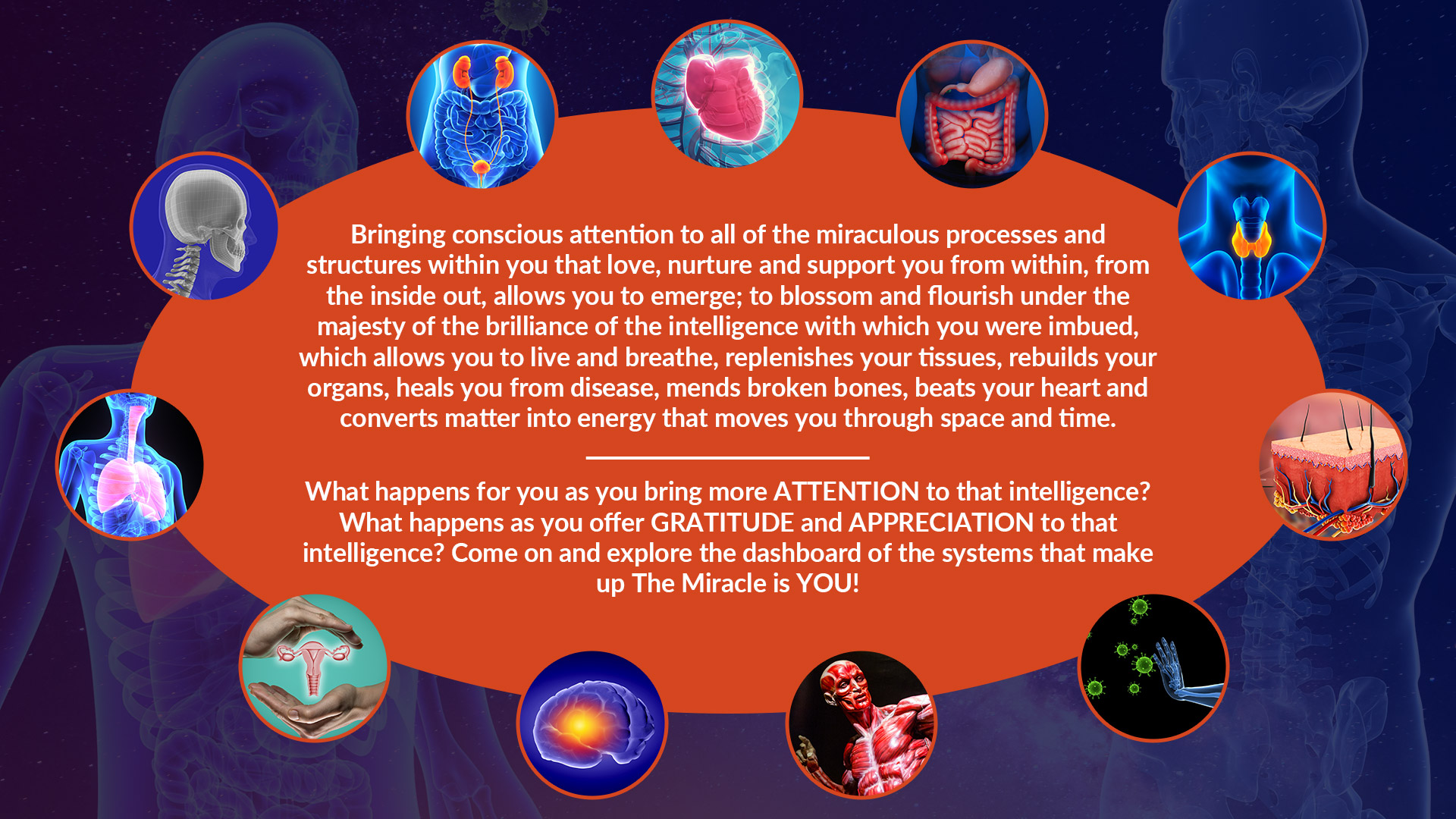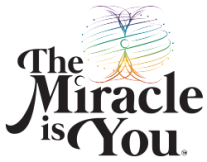The following things are true for you, no matter your gender, political affiliation, religious or spiritual belief, sexual orientation, dietary preference, philosophical inclination, race, creed, color, heart rate, birth circumstance, national origin or past life history. And, they are true for the person sitting next to you on an airplane, speaking to you on your cell phone, showing up on your computer screen or lying next to you in bed. As you honor these truths in yourself, how could you consider harming or dishonoring that person next to you?
Anatomy of Awareness through the Awareness of Anatomy

Circulatory System
Your heart, blood, and blood vessels are responsible for delivering oxygen and nutrients to every cell, tissue and organ in our body. It also conveys immune cells, electrolytes, hormones and other vital substances throughout your body. The circulatory system directly communicates with the lymphatic system, leading many to count the two systems as one.
Digestive System
This is your mouth, esophagus, stomach, small intestine, large intestine, rectum and anus. Your digestive system is uniquely designed to turn the food you eat into nutrients, which your body uses for energy, growth and cell repair.
Endocrine System
This is a collection of glands that produce hormones that regulate your metabolism, growth and development, tissue function, sexual function, reproduction, sleep and mood, among other things. The eight major glands are: hypothalamus, pituitary, thyroid, parathyroids, adrenals. Pineal body, the ovaries in females and the testes in males.
Integumentary System
Your body’s largest organ is your skin (integument). Together with hair, subcutaneous fat and nails, it is your protection from your environment. It provides form and individual recognition characteristics and aids in temperature and water regulation. Your skin is the site where Vitamin D is generated. The skin also serves as an anchor for sensory receptors (which are part of the nervous system) that detect pain, cold, warmth and pressure. It is your first defense against bacteria, viruses and other pathogens.
Lymphatic System
Lymphatic vessels travel with your blood vessels and your lymph nodes are where immune cells are produced. The lymphatic system returns a clear fluid called 'lymph’ that contains white blood cells from your tissues and organs to your heart. Lymph is produced by the leakage of a small amount of fluid from your blood vessels into the surrounding tissues and helps the body fight infection. The lymphatic system also transports fats absorbed from your intestine and carries immune cells from one place to another in your body.
Muscular System
There are 650 skeletal muscles that provide your movement and support, allow you to manipulate your surroundings and produces heat (due to its high metabolic activity). These types of muscles are smooth muscle which is found inside organs to help move substances through the organs and cardiac muscle which is found in the heart and helps to pump blood.
Nervous System
This is your brain, spinal cord, involuntary and voluntary nerves and all sensory organs (vision, smell, sensation, balance, hearing, taste) that coordinate your movements and control your responses to internal and external stimuli. It is the storehouse and processing center for memories, it regulates mood and provides the mechanisms for social interaction and development. It controls both voluntary action (conscious movement) and involuntary action (breathing).
Respiratory System
Sinuses, bronchial tubes and lungs
Skeletal System
You have 206 bones connected by cartilage, ligaments and tendons. It provides structural support and protection for your internal organs. Together with your muscular system, your skeletal system participates in movement and locomotion. It is your reservoir for calcium, phosphorus, magnesium and other minerals. Teeth are part of your skeletal system but aren’t considered bones.
Urinary System
The purpose of your urinary system is to eliminate waste from the body, regulate blood volume and blood pressure, control levels of electrolytes and metabolites, and regulate blood pH. It includes two kidneys, two ureters, the bladder, two sphincter muscles and the urethra.
Reproductive System
This is your system of sex organs which work together for the purpose of sexual reproduction. Many non-living substances such as fluids, hormones, and pheromones are also important accessories to the reproductive system.
